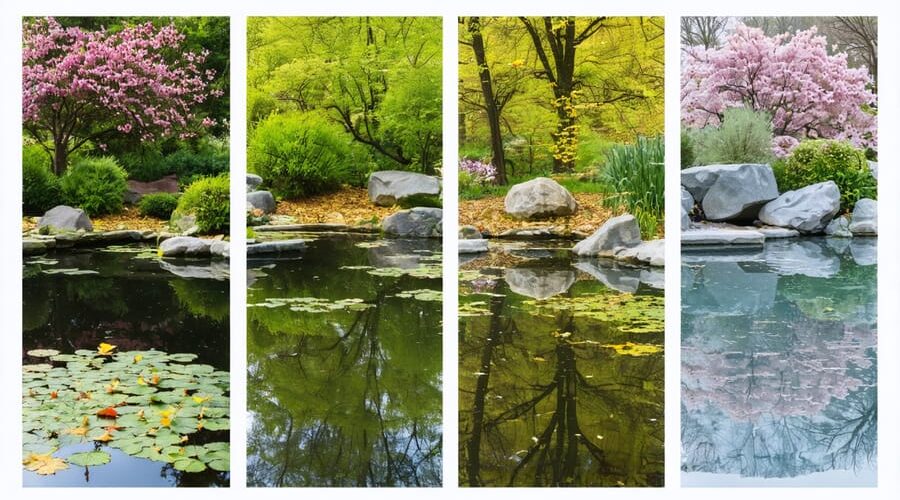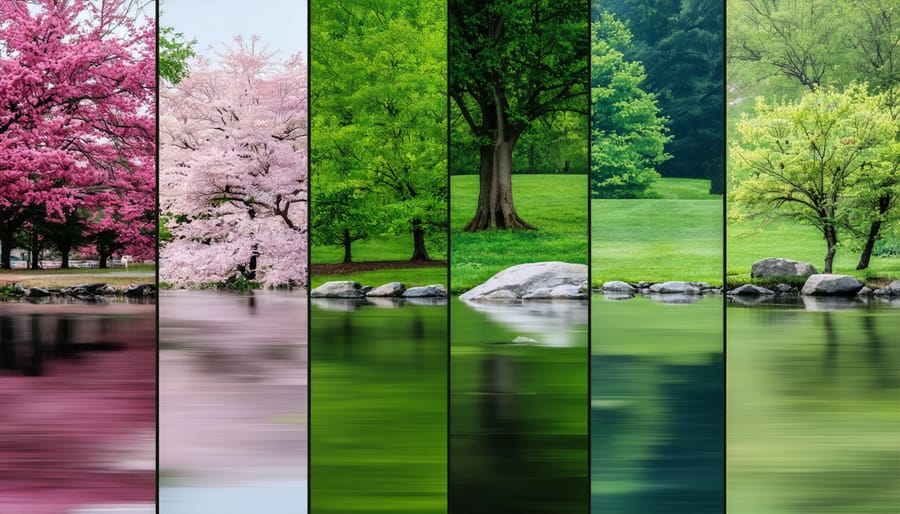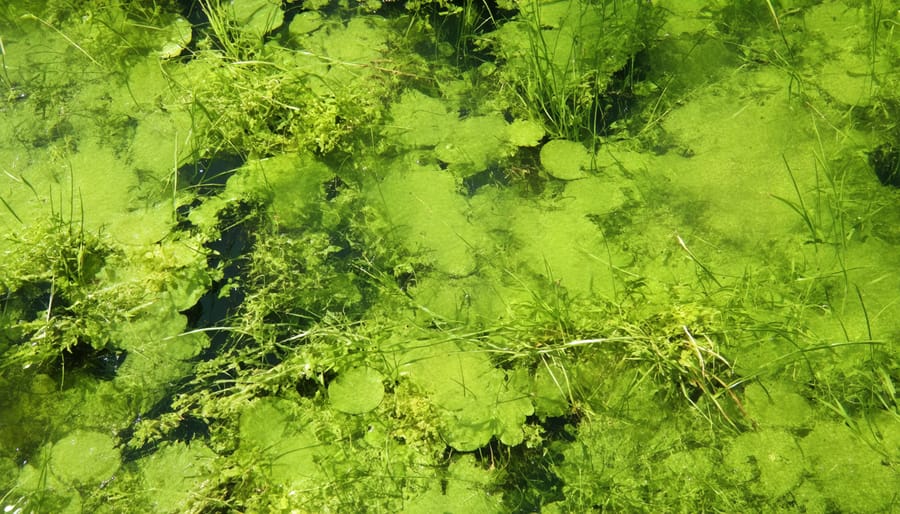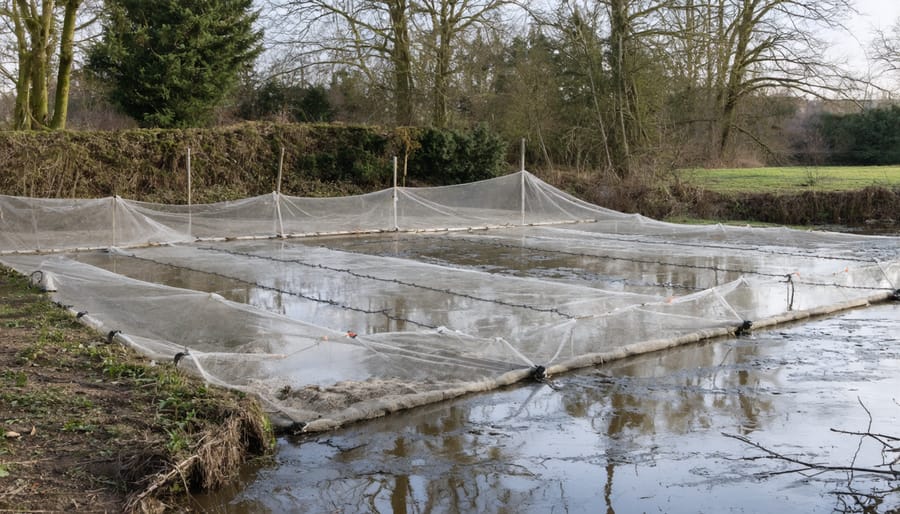
Keep Your Pond Perfect Year-Round: Smart Seasonal Pest Solutions
Transform your pond into a thriving ecosystem by mastering seasonal pest management throughout the year. Just as nature adapts to each season’s unique challenges, effective pond maintenance requires a dynamic, year-round approach to keep unwanted visitors at bay. From spring’s awakening algae blooms to winter’s dormant period, understanding the cyclical nature of pond pests enables proactive control measures that protect your aquatic paradise. This comprehensive guide breaks down essential management strategies for each season, helping you maintain crystal-clear waters and healthy fish while preventing common problems before they start. Whether you’re battling mosquito larvae in summer or preparing for autumn leaf control, these time-tested techniques ensure your pond remains a beautiful, balanced habitat through every seasonal transition.
Let’s dive into specific, season-by-season solutions that will keep your pond pristine and pest-free all year round, starting with essential spring preparations that set the foundation for successful pond management.

Spring: Preventing Early Season Invaders
Early Detection Strategies
Staying ahead of pest problems is crucial for maintaining a healthy pond ecosystem. The key to effective management lies in regular observation and quick response to early warning signs. Start by performing weekly walk-around inspections of your pond, paying close attention to the water’s surface, plants, and surrounding areas.
Look for telltale signs like unexplained plant damage, sudden changes in water clarity, or unusual fish behavior. Keep an eye out for mosquito larvae wiggling near the surface, which often indicates stagnant water conditions. Check pond plants for aphids, spider mites, or leaf damage, particularly on the undersides of floating leaves.
Create a simple monitoring routine by maintaining a pond journal. Note any changes in water quality, fish activity, or plant health. This record-keeping helps identify patterns and recurring issues before they escalate into major problems.
Install preventive measures early in the season. Consider adding beneficial insects like ladybugs or praying mantises to naturally control pest populations. Ensure proper water circulation to discourage mosquito breeding and maintain adequate filtration to prevent algae buildup.
Don’t forget to inspect equipment regularly. Check skimmers, filters, and pumps for proper functioning, as malfunctioning equipment can create conditions that attract pests. By implementing these early detection strategies, you’ll be better positioned to maintain a healthy, pest-free pond throughout the season.
Natural Spring Solutions
As nature awakens in spring, pond owners face unique challenges with emerging pests and blooming algae. Fortunately, there are several eco-friendly algae control solutions that work harmoniously with your pond’s ecosystem.
Start by adding beneficial bacteria to your pond as temperatures rise above 55°F (13°C). These helpful microorganisms naturally compete with algae for nutrients, keeping green water at bay. Consider introducing floating plants like water lilies or water hyacinths, which not only shade the water but also absorb excess nutrients that would otherwise feed algae.
For pest management, encourage natural predators like dragonflies and beneficial insects by creating suitable habitats around your pond. Installing bird houses nearby can attract insect-eating birds that help control mosquito populations. Adding mosquito-eating fish like gambusia can provide additional biological control.
Maintain your filter system by cleaning it thoroughly and checking for winter damage. A well-functioning filter helps remove debris that could decompose and feed unwanted algae growth. Consider adding barley straw or barley extract, which naturally inhibits algae growth as it decomposes.
Regular skimming of debris and careful pruning of surrounding vegetation prevents organic matter from accumulating in your pond. Remember to avoid using chemical pesticides near your pond, as these can harm beneficial organisms and upset the natural balance you’re working to achieve.
Summer: Peak Season Protection
Heat-Related Pest Problems
Summer brings unique challenges for pond owners as heat-loving pests become more active. The warm temperatures create perfect conditions for various unwanted visitors that can disrupt your pond’s ecosystem and cause headaches for pond keepers.
Mosquitoes are perhaps the most common summer pest, attracted to stagnant water. Keep your pond water moving with a properly sized pump and consider adding floating plants to reduce areas where mosquitoes can lay eggs. Natural mosquito control options like mosquito fish (Gambusia) can help keep populations in check without harming your other pond inhabitants.
Algae blooms also peak during hot weather, especially when excess nutrients are present. While some algae is natural, excessive growth can lead to oxygen depletion and affect water quality. Regular maintenance, proper filtration, and maintaining adequate plant coverage (about 60% of the surface) will help prevent severe algae problems.
Watch out for pond snails, which reproduce rapidly in warm conditions. While a few snails can be beneficial for cleaning, large populations can damage plants and create waste issues. Manual removal and limiting feeding are effective control methods.
Burrowing animals like moles and voles become more active in summer, potentially damaging pond edges and liner. Installing barriers around your pond’s perimeter and maintaining neat edges can discourage these pests from setting up home near your water feature.
Remember that prevention is always better than cure. Regular monitoring, maintaining proper water chemistry, and addressing issues early will help keep summer pest problems manageable without resorting to harsh treatments that might harm beneficial pond life.

Balancing Act
Creating a healthy pond environment requires a delicate balance between pest control and ecosystem preservation. While it’s tempting to aggressively tackle pest problems, harsh treatments can harm beneficial organisms that help maintain your pond’s natural balance. The key lies in managing water quality and supporting beneficial wildlife.
Start by introducing natural predators like dragonflies and beneficial bacteria, which help control mosquito larvae and algae growth without chemical intervention. Consider adding native plants that provide shelter for helpful insects while competing with unwanted algae for nutrients. Water lilies, for instance, shade the water surface, limiting algae growth while creating natural hiding spots for fish.
When pest issues arise, always begin with the gentlest solution possible. Physical removal of visible pests and debris, proper filtration, and maintaining appropriate fish populations can often resolve problems without chemical treatments. If you must use treatments, choose eco-friendly options specifically designed for ponds and follow dosage instructions carefully.
Monitor your pond regularly for signs of imbalance, such as cloudy water, unusual odors, or stressed fish. Quick identification of potential issues allows for early intervention with minimal impact on the ecosystem. Remember that some seasonal changes are natural and don’t always require correction – your pond is a living system that will naturally fluctuate throughout the year.
By focusing on prevention and working with nature rather than against it, you’ll create a more resilient pond that requires less intervention while providing a beautiful and healthy habitat for all its inhabitants.
Fall: Preparation and Prevention
Pre-Winter Checklist
As winter approaches, following a thorough autumn pond maintenance routine, it’s crucial to prepare your pond for the dormant season to prevent pest-related issues. Start by removing any remaining dead plant matter and fallen leaves, as these can become perfect hiding spots for unwanted pests during winter.
Check your pond’s perimeter for potential pest entry points. Fill any gaps or holes in the surrounding area with appropriate materials, and ensure your pond netting is secure and in good condition. This barrier is essential for keeping out debris and deterring winter-active pests.
Inspect your filtration system and pump, cleaning them thoroughly before winter sets in. Properly functioning equipment helps maintain water quality and discourages pest populations from establishing. If you’re using a UV clarifier, consider whether it needs cleaning or replacement.
Don’t forget to examine your plants for signs of pests or diseases. Trim back marginal plants and remove any damaged portions. For potted aquatic plants you’re keeping over winter, relocate them to deeper water to prevent freezing.
Monitor fish behavior and health closely during this transition period. Healthy fish are more resistant to parasites and other pests that might try to take hold during winter. Adjust feeding accordingly as temperatures drop, and ensure your fish have adequate depth for winter survival.
Fall Clean-Up Strategies
As autumn leaves begin to fall, it’s crucial to stay on top of your pond maintenance to prevent pest-related issues. Start by installing a pond net before leaves start dropping – this simple step can save you hours of work later and prevent organic debris from decomposing in your pond water.
Regular skimming of fallen leaves is essential, even with a net in place. Pay special attention to areas where leaves tend to collect, such as corners and around rocks. Dead or dying aquatic plants should be trimmed back to prevent them from decomposing in the water, which could create breeding grounds for unwanted insects.
Clean out your pond’s filters more frequently during this season, as they’ll be working overtime to handle the increased organic matter. Remove any vegetation that’s fallen around the pond’s edges, as these damp areas can become perfect hiding spots for slugs and other pests that might harm your plants.
Consider creating a designated compost area away from your pond for collected leaves and plant matter. This helps maintain a tidy pond environment while putting that organic material to good use. Remember to check pump areas and skimmers daily during heavy leaf fall to prevent clogs that could compromise your pond’s ecosystem.
Don’t forget to trim back any overhanging branches that could drop leaves directly into your pond. This proactive approach will significantly reduce your maintenance workload and help prevent pest problems before they start.
Winter: Maintaining Control
Cold Weather Monitoring
During winter, pests may seek warmth and shelter in your pond equipment or surrounding structures. Regular monitoring becomes crucial, even when temperatures drop. Start by checking your pond’s perimeter weekly, paying special attention to pump houses, filter systems, and storage areas where rodents might nest.
Look for telltale signs like droppings, gnaw marks on equipment, or disturbed insulation. These indicators often appear before serious damage occurs. Keep your equipment areas clean and free from debris that could provide nesting materials. Consider using natural deterrents like peppermint oil around potential entry points – many pests dislike its strong scent.
Inspect your pond covers and netting regularly for tears or gaps that could allow unwanted visitors access to your pond. Remember that hibernating fish are particularly vulnerable during this time, so maintaining proper protection is essential. If you spot any damage, repair it promptly to prevent pest intrusion.
Document any pest activity you observe, noting dates and locations. This information helps track patterns and plan better prevention strategies for future winters. If you discover an infestation, address it quickly using pond-safe methods that won’t harm your aquatic ecosystem.
Consider installing motion-sensor lights or ultrasonic deterrents around your pond area – these can be effective in keeping larger pests at bay while being completely safe for your pond inhabitants.
Winter Protection Methods
As temperatures drop, winter-proofing your pond becomes essential for protecting both your aquatic life and equipment. Start by removing fallen leaves and debris before they sink and decompose, which can harm water quality. Installing a pond net is a simple yet effective way to catch falling leaves while maintaining your pond’s natural beauty.
For natural pest control during winter, consider adding barley straw or extract, which helps prevent algae growth when temperatures rise again in spring. Keep your pump running to maintain oxygen levels and prevent ice formation, but position it slightly higher in the water to avoid stirring up settled debris.
If you have fish, gradually reduce feeding as temperatures drop, and switch to winter-specific food when water temperatures fall below 50°F (10°C). This helps prevent digestive issues and maintains their health during dormancy.
Monitor water parameters regularly, even in winter. While pest activity typically decreases during cold months, maintaining proper conditions prevents problems from developing. Consider using beneficial bacteria treatments designed for cold water to help break down organic matter throughout winter.
For equipment protection, insulate exposed pipes and filters to prevent freezing. If you use a UV clarifier, it’s best to remove and store it indoors until spring, as these units are particularly vulnerable to frost damage.

Successful pest management in your pond requires a proactive, year-round approach. By following seasonal maintenance routines, you’ll create a healthier environment for your aquatic life while keeping unwanted visitors at bay. Remember to inspect your pond weekly, even during winter months, to catch potential issues before they become major problems. Adjust your feeding schedule and filtration systems according to seasonal changes, and maintain proper water chemistry throughout the year. Don’t forget that what works in spring might need adjustment in fall – flexibility is key to effective pest control. Most importantly, keep detailed records of your maintenance activities and any pest issues you encounter. This documentation will help you develop an increasingly effective strategy tailored to your pond’s specific needs over time. With consistent attention and seasonal adaptations, you’ll enjoy a beautiful, pest-free pond environment all year round.
